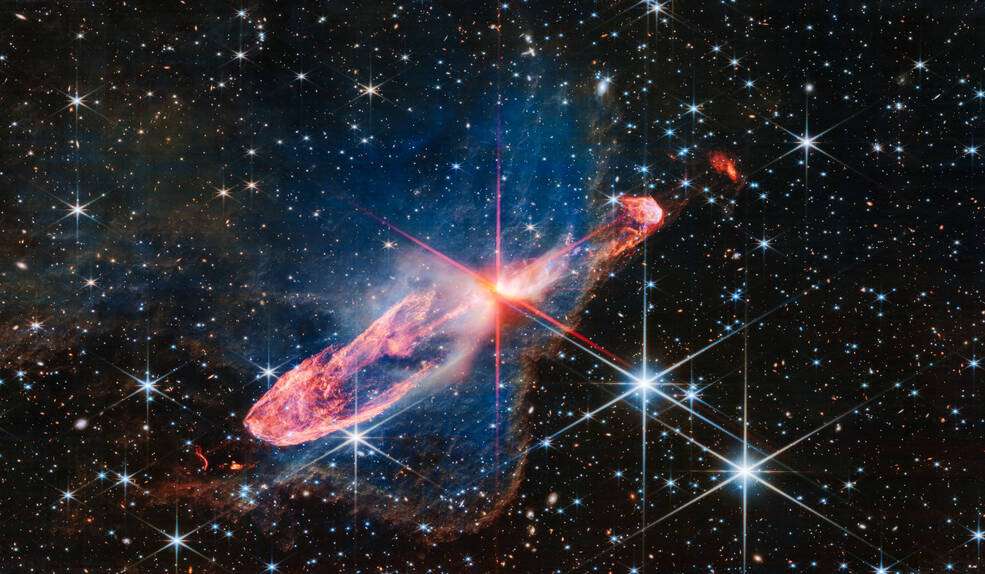NASA’s James Webb Space Telescope has captured a stunning image of two young stars forming in the constellation Vela. The image shows the stars’ jets of material, which are being ejected from the stars as they repeatedly ingest and eject gas and dust. The jets are causing the nebula around the stars to light up.
The image also shows the asymmetry of the two lobes of material. The right lobe is smaller and closer to Earth, while the left lobe is larger and further away. The stars will fully form over millions of years and the jets will dissipate, leaving the binary stars behind. According to NASA, the image was taken in near-infrared light, which allowed Webb to see through the dust and gas surrounding the stars, and it is a composite of several exposures, which adds to its depth.
Herbig-Haro 46/47 lies only 1,470 light-years away, making it one of the closest regions of star formation to Earth. The image provides a glimpse into the early stages of star formation, and helps experts understand how stars and their surrounding nebulae evolve.

